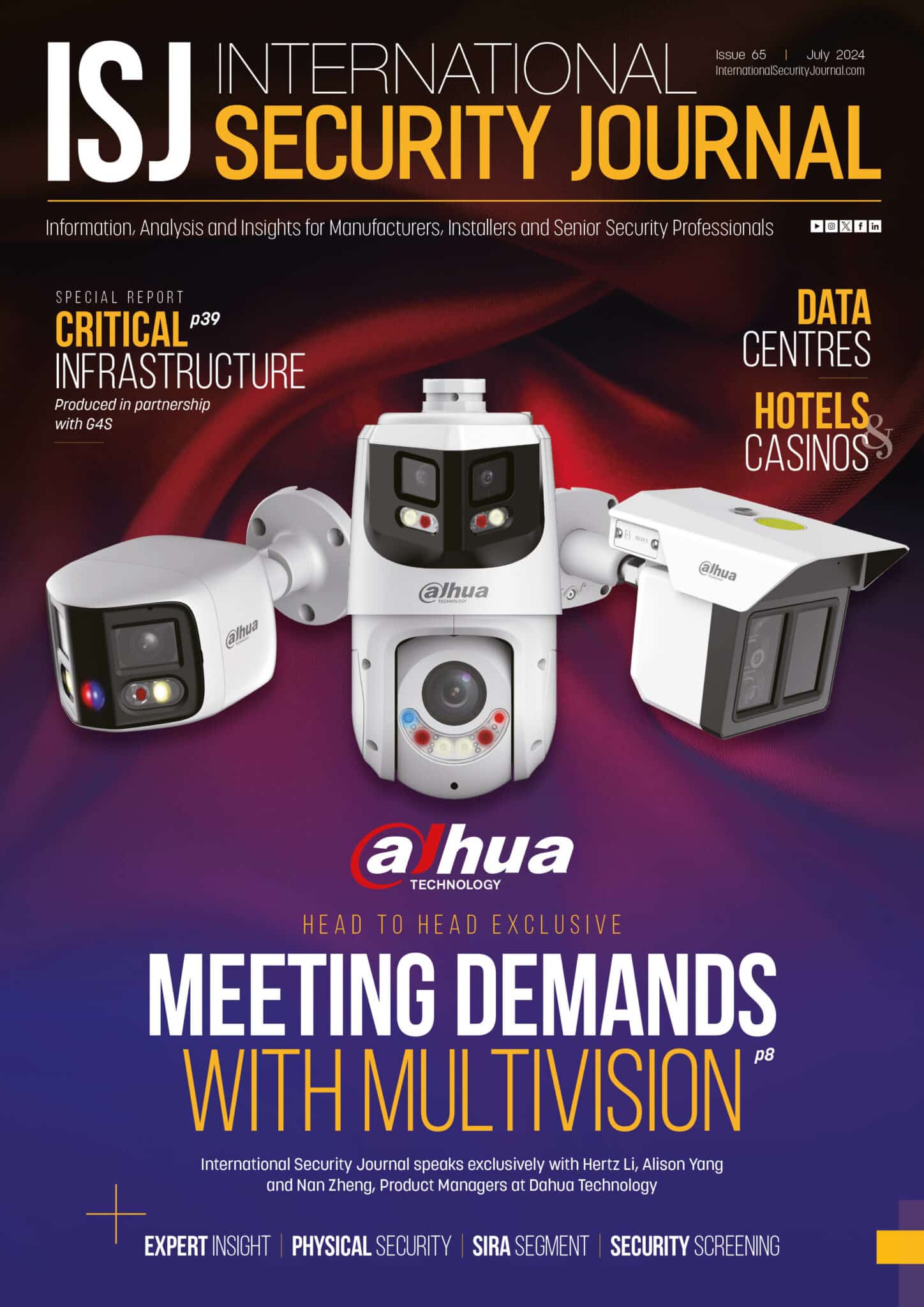How is access control unlocking more than just doors?


James Thorpe
Share this content
Meredith Palmer, Chief Product Officer, Gallagher Security takes a detailed look at access control and the ecosystem driving business intelligence.
Achieving operational efficiency is like the never-ending pursuit of the great white whale, a massive moving target that seems like it should be easy to attain but is never quite in grasp – and that chase is costing businesses 20-30% of revenue each year.
It’s also hurting in human terms as staff turnover increases and organisational reputation suffers in the wake.
Many businesses try to spend their way out of the problem by hiring third party consultants to identify silos and bottlenecks or by introducing new systems designed to improve efficiency, not realising the solution may already lie within their existing access control system.
That’s because modern access control has become so much more than a standalone system for securing doors: It’s evolved into a sophisticated ecosystem providing operational insights and business intelligence in addition to enhanced physical security.
As these new capabilities become more widespread, businesses around the world should take note of the social, physical and monetary value these systems are delivering.
Article Chapters
ToggleAttracting and retaining top talent
Perhaps one of the more surprising ways in which access control systems are improving business performance is by fostering an employee-first environment that attracts and retains top talent, a task that can cost an organisation thousands each year.
The expanding capabilities of these solutions help businesses protect their hiring investments, generating a return on their system and reinforcing external reputation year on year.
Foundationally, when employees feel confident their workplace is secure and their employer prioritises their physical – and cyber – safety, they’re more likely to stick around, but security just scratches the surface of how these systems can contribute to the employee experience.
For one, a modern access control system’s ability to streamline operations can appeal to prospective employees who seek workplaces that value their time and offer the tools to maximise productivity.
Automation of tasks like time and attendance tracking, visitor management, credentialing or even turning the lights on and off each day reduces the burden on staff and frees up time to focus on more compelling tasks.
Streamlined operations also minimise disruptions and reduce delays, saving staff the frustration of waiting on departments to implement functionality or approve requests.
Beyond functionality, the changing values among today’s workforce has led to an evolution of Maslow’s hierarchy of needs, which now includes the need for workplace transparency and accountability, both of which can be delivered through modern access systems.
Regardless of the workplace or industry, there are countless integrations that can be combined with access control to foster a culture of trust among employees.
For example, sites with heavy machinery or hazardous materials can ensure an environment of responsibility by integrating access control with drug and alcohol screenings, fatigue and exposure management and demonstrate compliance with industry mandates and regulations.
Offices where vulnerable information is stored can shed light on employee movement by monitoring and tracking access to sensitive areas, ensuring only authorised personnel can enter.
Organisations with large volumes of visitor traffic can track attendance and time on-site to make sure visitors stay safe and employees aren’t disrupted.
And there are many other examples like these.
By providing a secure environment, enhancing productivity and creating a positive workplace culture, businesses that invest in integrated access systems demonstrate a commitment to employee wellbeing and integrity, positioning themselves as organisations where people enjoy working.
Optimising costs and efficiency
At the heart of a modern access control system’s ability to attract and retain top talent are integrations, the importance of which can’t be overstated for businesses today.
In fact, they’ve become so important that integrations with electronic access control systems have moved beyond optional add-ons and become business-critical necessities.
That’s because integrated access control systems provide a rich set of data that organisations can tap into for better decision making and operational improvements.
By analysing access patterns, businesses can optimise workspace utilisation, improve an individual’s experience to increase employee retention and enhance productivity.
For example, understanding peak arrival/departure times and pinpointing access bottlenecks can help businesses adjust staffing levels and coordinate smoother hours of operation.
Occupancy and space utilisation can be monitored to help understand how buildings are being used and improve office configurations.
Integrating with building automation systems can optimise energy usage by adjusting lighting, heating and cooling based on occupancy data, reducing costs and contributing to sustainability efforts.
Additionally, these systems are continually introducing new automations to replace repetitive tasks that can weigh an organisation down, like access request workflows, a task so time consuming for some organisations that it requires a full time employee to manage.
Effectively, the automation of access request workflows is creating smart access control that removes the risk of human error and reduces labour costs, all while getting people on site faster and dramatically improving efficiency.
This is largely achieved by streamlining the access request process: Where traditional access workflows might involve multiple departments to request, approve and add an individual to the system, automation reduces the touch points and requires significantly fewer people to be involved.
Critically, modern systems enable businesses to integrate their organisation into one centralised platform, from HR to IT and beyond.
This ‘single pane of glass’ view removes the complexity of managing disparate systems, improving efficiency and streamlining organisations.
Reducing friction and removing obstacles
With so many new functionalities, modern access control systems have become sophisticated engines for efficiency, but complexity under the hood doesn’t require a complicated customer experience.
In fact, the ease of use offered by integrated access systems is one of their key benefits.
Access features like digital wallets and biometrics provide intuitive options for employees to quickly enter buildings even during high traffic periods, reducing wait times and eliminating bottlenecks in the process.
These features also enable organisations to do away with traditional key-cards (which are costly to replace) and pin numbers (which are easy to forget), relying instead on what every employee always has with them, their phone and their body.
And, because organisations can tailor access settings to meet their specific needs, like applying credentials or adhering to compliance regulations, they’re able to align access control with wider business objectives without hindering daily operations.
Perhaps most importantly, integrated access control systems provide enhanced security without requiring constant attention.
By adding an extra layer of protection through mobile phone authentication and implementing continuous updates to access control hardware, businesses can mitigate potential security threats proactively.
The result is reduced downtime due to breaches, leading to cost savings and peace of mind for business owners and managers.
Convergence with cloud technology
The cloud’s impact on modern access control systems is transforming industry standards and will dramatically change how we protect people, assets and the very foundation of business operations.
Through the cloud, organisations struggling with security and IT talent shortages will benefit from teams of product and cybersecurity experts working behind the scenes (and off their payroll) to keep systems automatically updated with the latest cyber protections.
Businesses looking to improve decision-making efforts will be empowered with richer data sets, providing more nuanced insights into operations, trends and behaviours.
And, with limitless potential to scale, roadblocks to growth can be removed entirely, saving time and maximising security investments.
In short, functionalities that are simply not feasible in traditional access control systems will become a reality through convergence with the cloud.
Some organisations remain sceptical of the cloud’s ability to protect organisational data and employees’ personal information, especially considering the increasing prevalence of GDPR-inspired privacy laws and the hefty consequences businesses face by not demonstrating compliance.
However, by partnering with a provider who demonstrates compliance with frameworks like SOC2 Type II (which ensures third party service providers manage data securely), that burden is alleviated as it’s absorbed by the vendor.
It’s a win for the organisation.
Access control: Unlocking the imagination
As integrated access control systems like Gallagher Security’s deliver more intelligence, more opportunities are being created for growth, retention and optimisation that weren’t previously possible.
In the process, they’re unlocking users’ imaginations and empowering businesses with the freedom to think bigger and create their security, their way.
To learn more about how Gallagher delivers business intelligence through access control, visit our website: https://security.gallagher.com/


